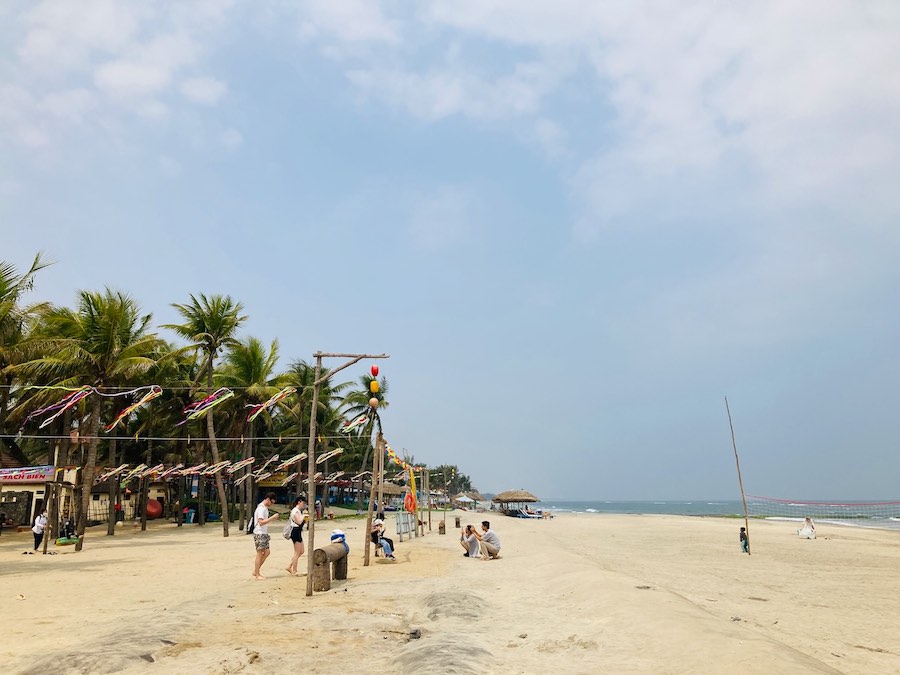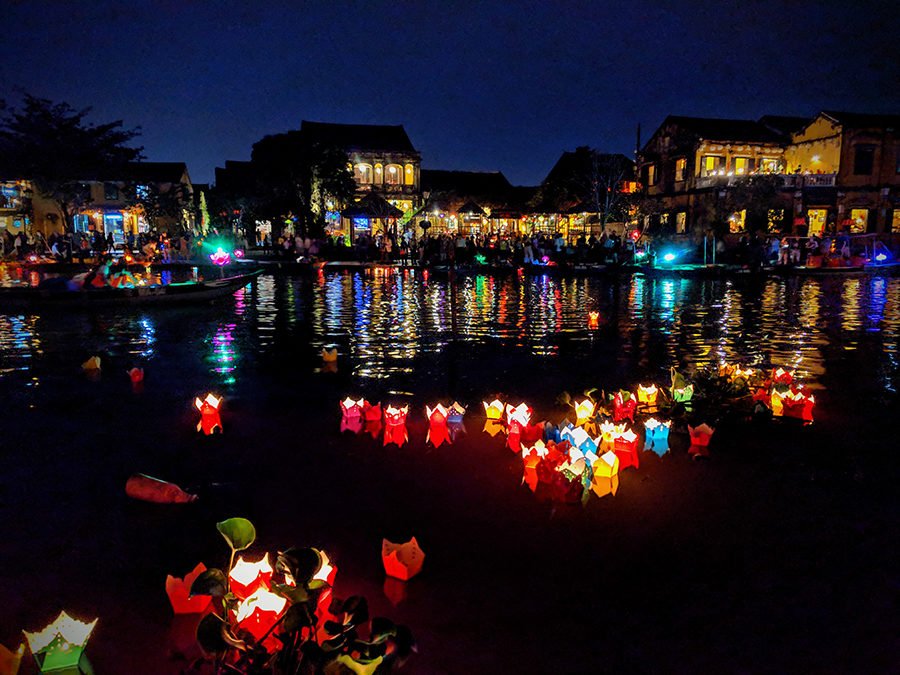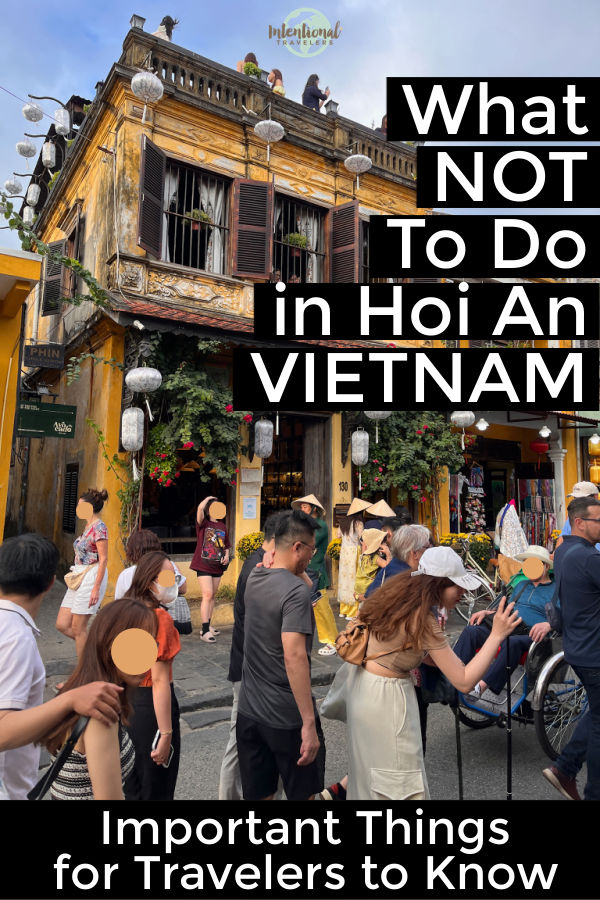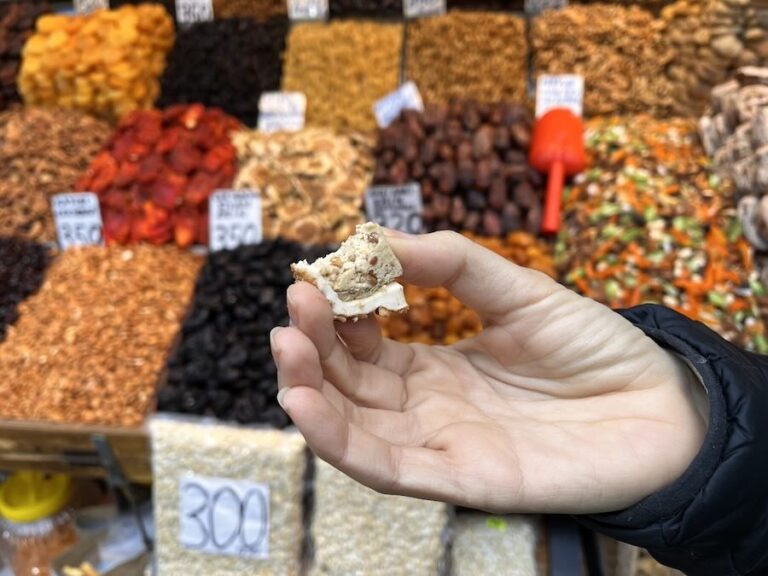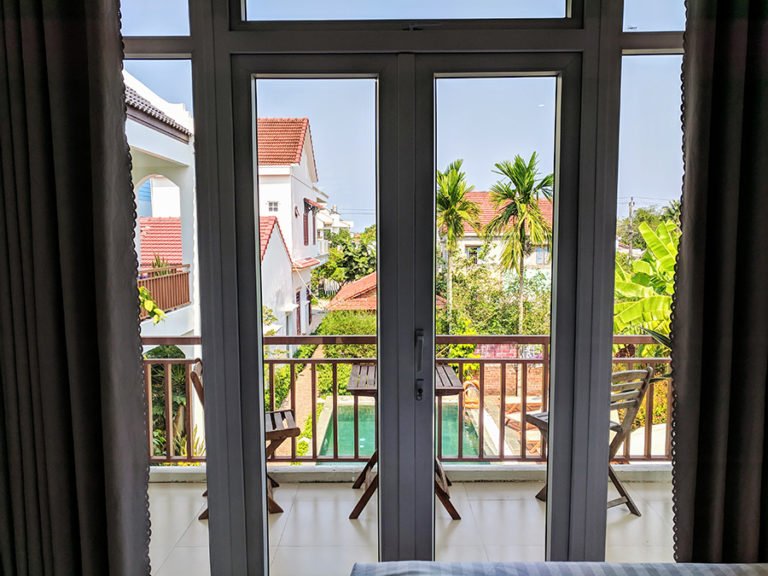What Not To Do in Hoi An Vietnam – Important Things to Know
Welcome to our guide on what not to do in Hoi An, Vietnam!
Since our second trip to Vietnam back in 2016, Hoi An has captivated our hearts and become a favorite place for extended stays. Initially drawn by its well-preserved Ancient Town and the promise of warm weather, we quickly learned that Hoi An offers much more beneath its tourist-centric veneer.
However, we’ve noticed that many visitors to Hoi An, drawn by glossy photos and top-ten lists, aren’t engaging genuinely with the local culture. Some tourists may leave disappointed, having only skimmed the surface of what this beautiful town has to offer.
Or worse, some have inadvertently disrespected local customs due to a lack of awareness.
This post aims to help you avoid common mistakes and ensure your visit is both fulfilling for you and respectful to the local community.
Do’s and Don’ts: Hoi An Vietnam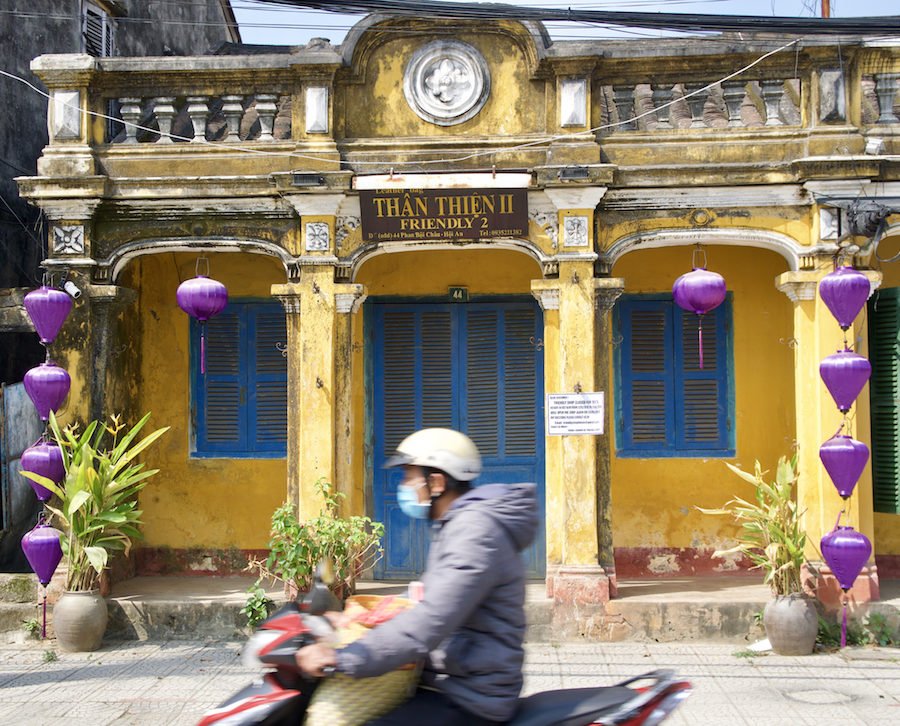
Don’t Rush Your Visit
Many travelers we’ve met made the mistake of dedicating too little time for Hoi An in their itinerary, only to regret it later.
In fact, Hoi An is perfect for slow travel. We’ve returned year after year and stay longer each time. There’s no end to the great restaurants you can try or neighborhoods and rice fields to wander through.
Plus, Hoi An makes a great home base for day trips.
For all these reasons, I would encourage most travelers to spend the majority of their Vietnam trip itinerary in Hoi An.
Don’t Limit Yourself to Tourist Hotspots
While Hoi An’s Ancient Town and night-time lanterns are must-see’s, they are not the whole story. I’ve heard from so many tourists who only saw Ancient Town during peak crowds and found it overly “Disneyfied”.
For one, Ancient Town is a legitimate, historical UNESCO World Heritage site. Yes, vendors cater to tourists there, but unlike actual theme parks, this place existed long before tourism.
Two, the town’s real treasures are found off the beaten path.
Wander through local alleys where homes open directly onto the street, offering glimpses into everyday life. Observe traditional farming methods in the surrounding countryside or discover family-run shops where local foods are made the same way for generations.
TIP: I love to use some of the lesser-known functions of Google Maps to find hidden gems and make the most of our time and money on trips. It’s probably my most-used trip planning tool for unfamiliar destinations.
If you have our Google Maps Travel Hacks course (also available inside our Membership), use my video tutorials to unlock the full potential of this app to optimize your trips.
Thanks to a developed tourist industry, Hoi An is approachable for foreigners. This allows for unique opportunities to witness “Old World ways” and connect with the people for a deeper understanding and appreciation of local culture.
Use our interactive Hoi An map to make your own self-guided walking and cycling tours.
Explore off the beaten path with these recommended tours:
Mr. Phu Motorbike Tour Adventures
Bicycling Tour Around Hoi An Countryside
Hidden Gems Hoi An Food Tour
Do Shop Local
When we first came to Hoi An, there were no Western chain restaurants or resorts. One thing we admire most about this town has been the prevalence of family-run, home-based restaurants and businesses.
While it might be comforting to see a familiar name like Starbucks, we encourage you to explore local alternatives instead. Vietnam has a strong coffee culture of its own, and you’ll be sure to find new favorites among their regional specialties.
Each meal and drink purchased from local establishments is a chance to engage authentically with the culture and to support local businesses that give Hoi An its distinct character.
See our list of favorite restaurants in Hoi An for ideas, or explore with a local guide in this highly recommended Hidden Gems Hoi An Food Tour.
Don’t Self-Drive a Motorbike If It’s Your First Time
While renting a motorbike is a fun and flexible way to explore, I cannot in good conscience recommend it unless you are experienced, understand local driving habits, and hold the appropriate international or Vietnamese driving license.
Learning to ride in Vietnamese traffic can be dangerous for all involved – more on traffic below.
Consider hiring a local motorbike driver to take you on a tour, like our friend Phu (who can also teach private lessons). Or you can always use bicycles and taxis to get around.
We recommend:
Mr. Phu Motorbike Tour Adventures
Responsible Travel: Cultural Faux Pas to Avoid in Vietnam
Don’t Dress Like You’re Always At the Beach
Please. Don’t be that entitled, oblivious tourist who wears nothing but their swimsuit in town. When you leave the beach, put your clothes back on!
Vietnamese people typically dress conservatively. While no one expects foreigners to dress exactly like locals, it’s important to respect their customs around modesty and appropriate attire.
Especially when visiting temples and other cultural sites, wear clothing that covers shoulders, belly, chest, and knees.
Don’t Ignore Local Customs at Religious Sites
In addition to dressing conservatively and covering your shoulders, religious sites like Buddhist temples and neighborhood shrines may have other norms and rules. There may be specific areas where shoes need to be removed.
Check for posted signs in temple grounds that will display the rules. In the absence of signs, let local behavior be your model (and don’t assume that foreign visitors are modeling appropriate behavior).
Generally, at religious sites, you should avoid speaking loudly or taking photographs without permission.
Don’t Be A Disrespectful Homestay Guest
If you choose to stay in a family-run homestay in Hoi An, which we highly recommend, remember it’s not a hotel. It’s someone’s home.
Avoid coming back late at night or creating disturbances. If you plan to keep late hours, a hotel or hostel might be a more suitable option for you.
Unfortunately, one of our favorite homestays ended up closing, in part because some of their foreign guests were getting drunk and creating disturbances. It’s really a shame because homestays are one of the best cross-cultural exchange opportunities.
Read our Guide to Where to Stay in Hoi An for accommodation recommendations
Do Stay Calm in Traffic and Cross Streets Carefully
Vietnamese traffic may appear chaotic to newcomers, with its seemingly endless flow of motorbikes. However, there is a flow and harmony to it (and actual rules of the road) if you take time to understand it.
Here’s an example of our first experience crossing a busy street in Hanoi, as an example:
It’s important not to get angry or frustrated. Vietnamese drivers might honk at you, but not out of anger. Honking the horn is a way to let you know they’re there and prevent collisions.
Patience and attentiveness go a long way when navigating the streets in Hoi An.
When crossing the streets as a pedestrian, it’s very important do so predictably. Erratic movements can confuse drivers.
When crossing in a group of people, avoid walking in a vertical line or back-to-back, which blocks the road. Instead, walking across the street shoulder-to-shoulder in a compact group is easier for traffic to continue to flow around you.
Don’t Block the Alleys
The narrow alleys of Ancient Town are picturesque and delightful to wander through. However, alleys (much like the paths through the open market) are also functional thoroughfares motorbikes.
Be mindful not to block these passages while taking photos or walking and move aside for passing motorbikes.
It’s generally a good rule of thumb to always stay aware of your surroundings in Hoi An.
Don’t Wear Shoes In Someone’s Home
When entering a Vietnamese home, it is customary to remove your shoes. In hotels and homestays, shoes and slippers may be worn in common areas.
There will almost always be house slippers available at an entrance to any space where removing shoes is expected. This is a good visual cue to remember this practice.
Note that many houses (and businesses) have a “wet bath”, where the floor may often be wet from the shower or daily mopping. In this case, they’ll often provide plastic slippers to wear specifically for using the restroom facilities.
When in doubt, you can always ask an owner if they would like you to switch into slippers for any given space.
By the way, I’ve seen tourists who end up walking around outside in their socks because they’ve removed their shoes indoors but never put them back on. This defeats the purpose, as they end up tracking dirt back in when they return indoors.
Avoid public displays of affection
PDA (public displays of affection), like kissing a romantic partner in public, is not culturally appropriate in Vietnamese society. You’re not likely to even see a lot of couples holding hands (though some younger couples do) or cuddling in public.
Many foreigners are unaware that their romantic behaviors might be frowned upon in another culture. To respect cultural norms, just keep your kisses and cuddles to private spaces until you return home.
Our Curated Map and Guide for Hoi An
We created an interactive map of all the attractions and restaurants in Hoi An that we love. You can click on each map point to see more details (pictures, prices, and our tips). Plus we share suggested walking and cycling routes, along with an in-depth Hoi An travel guide.
Get our Interactive Map + Hoi An Travel Guide
Which Attractions in Hoi An are Not Worth It?
Not all attractions in Hoi An may be worth your time, especially if you are seeking authentic and meaningful experiences.
For our top recommendations, see our list of best things to do in Hoi An.
Don’t Bother With The Night Market
It might seem like an appealing evening activity, but like many night markets across Vietnam, Hoi An’s version tends to feature cheap, mass-produced goods.
It does not compare to the local craftsmanship you might find at night markets in Thailand, for example. This night market seems more about capitalizing on the tourist crowds that come to see the lanterns at night.
If you’re looking for unique souvenirs, you’ll find better quality throughout Ancient Town any time of day.
Ancient Town at Night (Hear me out!)
While the illuminated ambiance of Ancient Town at night is definitely worth experiencing at least once, I don’t recommend spending all of your time there at night.
Why? Every evening, large groups of tourists are bussed into Ancient Town. Crowds in the streets increase significantly.
For a more enjoyable experience, consider visiting Ancient Town early in the morning before the shops even open. Locals will be visiting the market and picking up breakfast, and you’ll be able to enjoy the colors and charm of the buildings without hoards of people.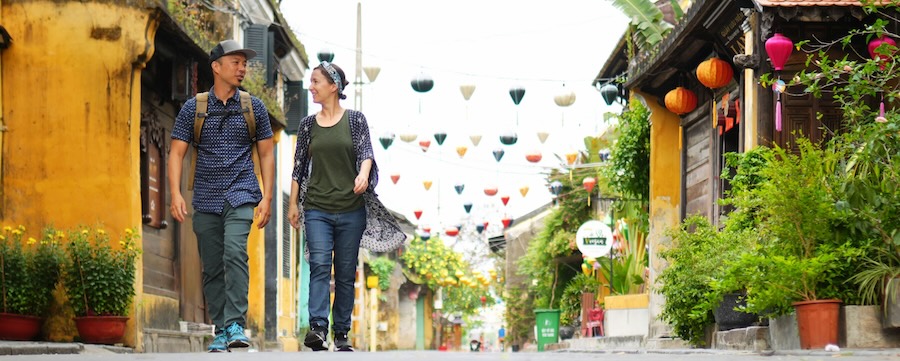
Looking for a local guide to take you off the beaten path and introduce you to authentic, local foods in Hoi An? You won’t find a better experience than this Hidden Gems Hoi An Food Tour.
Don’t Expect Normal Schedules During Tet
This is not necessarily an attraction, but visiting Hoi An during Tet, the Vietnamese New Year, requires special consideration.
We’ve been in Hoi An during Tet three times, and it’s actually a good place for foreigners to be during this holiday, as long as you’re willing to be flexible with your plans.
This major holiday is a time when locals are predominantly focused on family celebrations, which means that many attractions and restaurants might close or operate on reduced hours. Additionally, those that remain open might increase their prices.
If your travel dates coincide with Tet (including the week before and after), book everything well in advance and expect a slower pace during this period.
Hoi An Vietnam FAQs
Is Hoi An ruined by tourism?
Hoi An undoubtedly sees a lot of tourism, which has its upsides and downsides. We have seen significant changes since we first started visiting in 2016, and not always for the better.
For example, the local tradition of floating lanterns on the river during Lantern Festival used to happen once a month with the full moon. Now, tourists want to float lanterns and ride boats with lanterns every night, so it’s been commoditized.
The truth is, our local friends who live in Hoi An are very happy that it has developed so much and brought opportunity to their families. At the same time, housing costs continue to increase for locals and competition for tourism dollars is a struggle.
What keeps us coming back? Beyond the well-trodden path lies a Hoi An that is still very much alive with local customs and the quiet traditions of daily life.
The surrounding countryside, with its rice paddies, traditional villages, quiet rivers, and fish farms, offers a glimpse into the lives of the local people largely untouched by tourism.
It’s a city that rewards the curious with rich, immersive experiences for those who seek them.
Which is better: Hoi An vs. Da Nang?
There’s a good chance you’ll fly into Da Nang if you’re visiting Hoi An, as it’s the biggest airport in Central Vietnam. Da Nang to Hoi An is only about a 45 minute drive.
While Da Nang doesn’t have as much historic architecture, it’s a uniquely modern, coastal city. The main attraction in Da Nang is the long stretch of beach.
I personally prefer the smaller feel and charm of Hoi An, but city-lovers and beach goers might prefer Da Nang. The other difference is that Hoi An has more of a town center, whereas Da Nang is spread out and is more difficult to visit without transportation.
In conclusion, when visiting Hoi An Vietnam, it is essential to approach with respect and curiosity. By avoiding common tourist pitfalls and engaging with the local culture responsibly, I think you’ll be able to truly appreciate the charm and heritage of Hoi An.
Remember to explore beyond the main attractions, respect local customs, and take your time in this UNESCO World Heritage site. We believe Hoi An still provides worthwhile opportunities for authentic and memorable travel experiences.
Let us know what questions you have, or share your own tips and recommendations, in the comments below.
More Tips for Intentional Travel in Hoi An
- ⭐ Save all this info offline! It’s included with our curated Hoi An Map and Travel Guide.
- 🤝 Try to make a local connection, whether it’s meeting a friend-of-a-friend you find through social media, staying with locals, or hiring a local guide. We recommend doing the local-led Hidden Gems Hoi An Food Tour. Also check out the experience listings on LikeLocal.
- 🚌 Compare and book Vietnam train tickets, bus tickets, and car hires on BookAway.
- ❤️ For more guidance, see: how to have authentic, meaningful travel experiences in touristy areas and our simple rules for intentional travel series
- 📱Master phone travel essentials with our Smartphone Savvy Travel course to travel safely, confidently, and improve connections with locals.
- ᯤ Stay connected with an eSIM – learn more and look for our discount code in this eSIMs for travel post.
- ✈️ Find better flight deals to Hoi An with our Book Better Flights tutorials.
- 🛏️ Pinpoint perfect accommodations efficiently and avoid disappointing stays with our Smart Stay Finder course.
- Protect your Hoi An trip with insurance – We’ve started using Nomad Insurance by Safety Wing for affordable evacuation, international medical, and trip coverage.

For further reading about Hoi An:
–Our Ultimate Hoi An Travel Guide + Curated Map
–Best food in Hoi An: Our favorite restaurants
–Where to stay in Hoi An
–5 Best day trips from Hoi An
–3 Day Hoi An Itinerary and Self-Guided Walking Tour Map
Like this post? Pin it for later or share with a friend!





